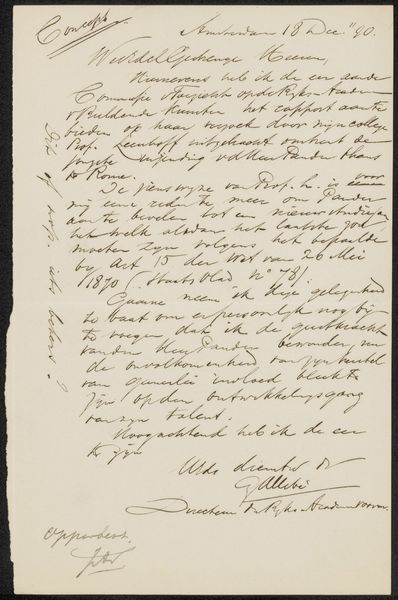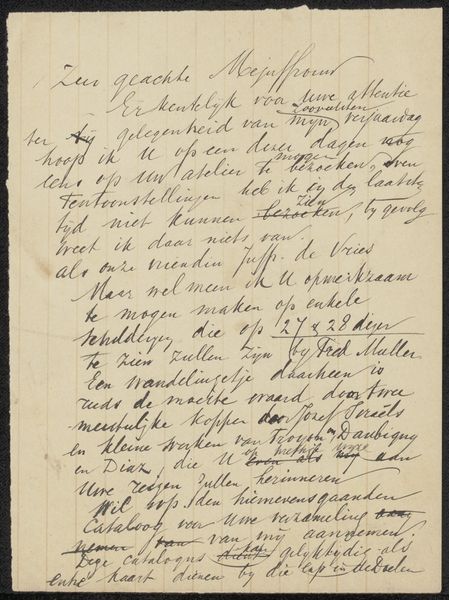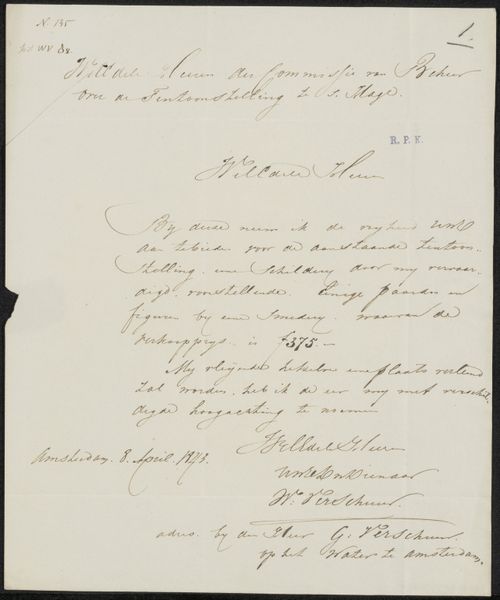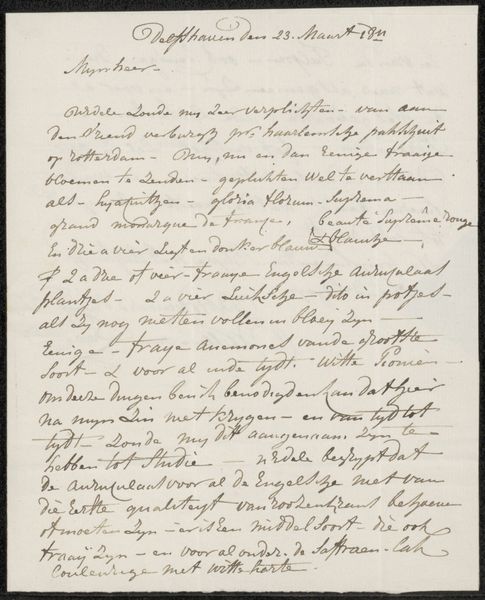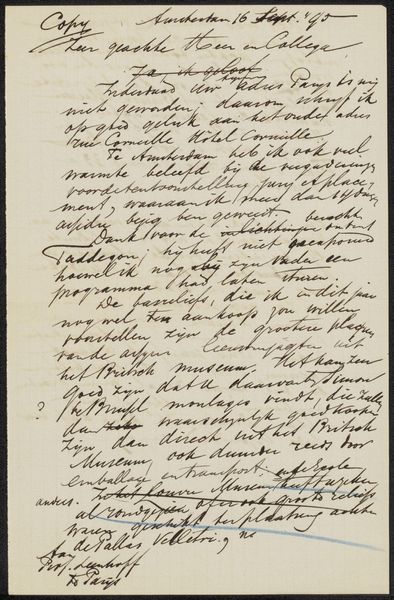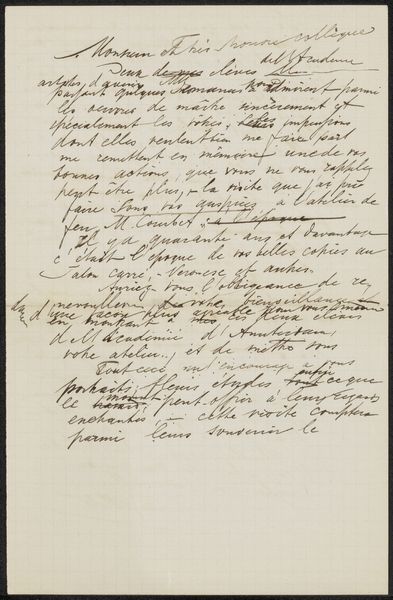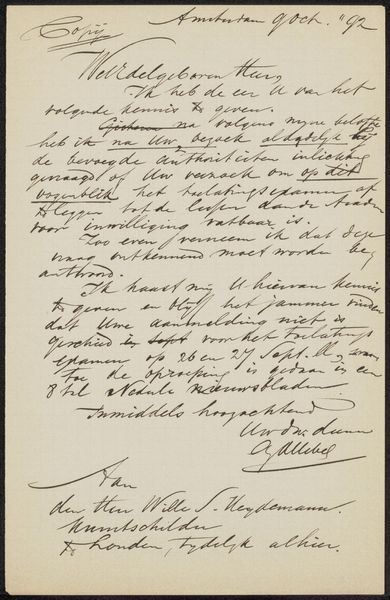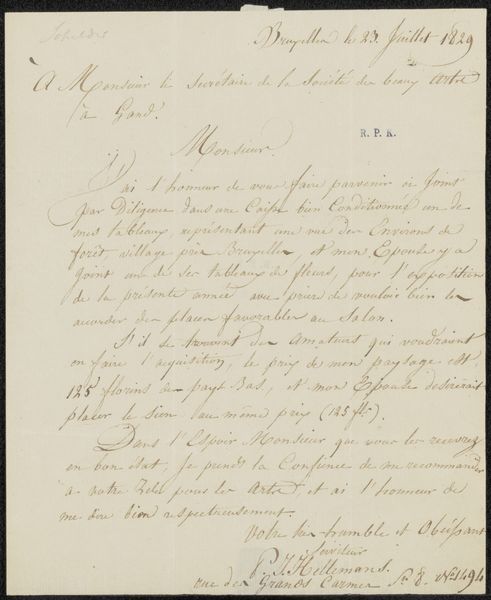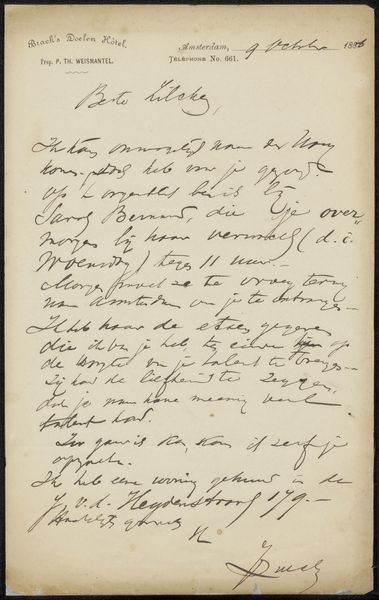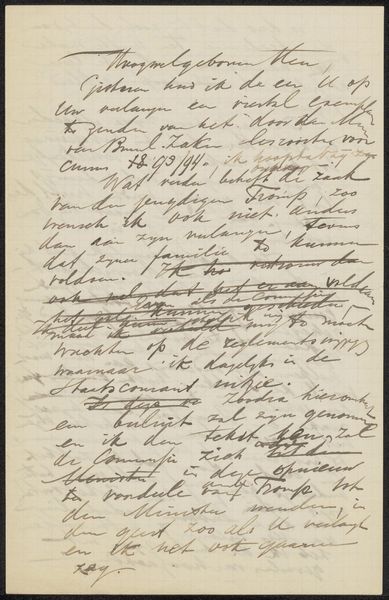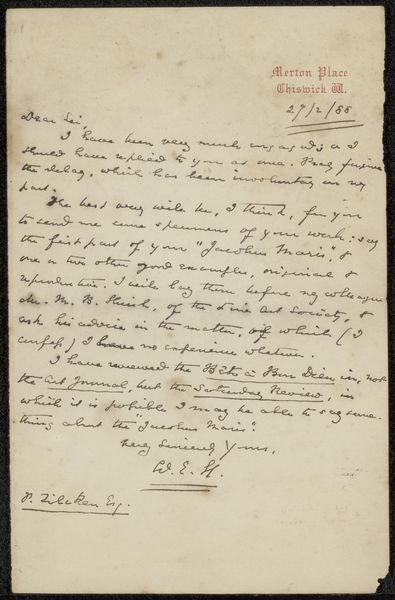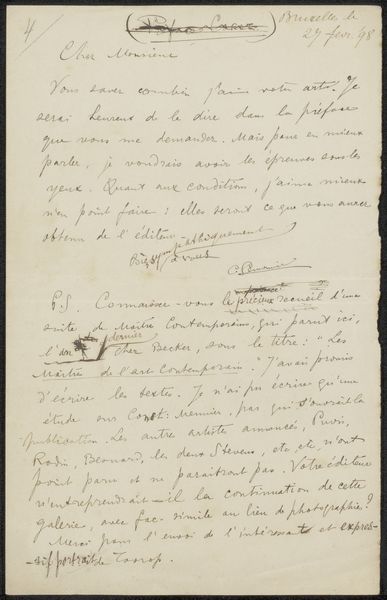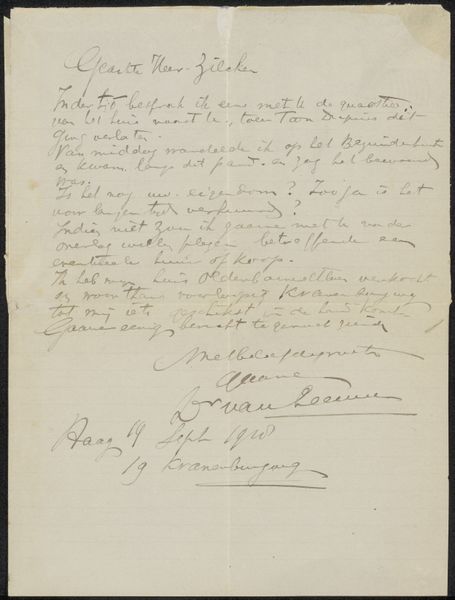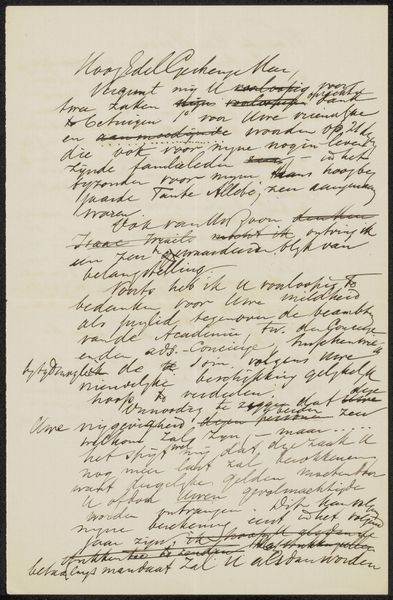
drawing, paper, ink
#
portrait
#
drawing
#
hand-lettering
#
old engraving style
#
hand drawn type
#
hand lettering
#
paper
#
personal sketchbook
#
ink
#
hand-drawn typeface
#
pen-ink sketch
#
pen work
#
sketchbook drawing
#
sketchbook art
#
calligraphy
Copyright: Rijks Museum: Open Domain
Curator: Today, we're looking at August Allebé's "Brief aan Jan Veth," thought to have been created sometime between 1906 and 1909. It's an ink drawing on paper, currently held at the Rijksmuseum. What's your first impression? Editor: The script jumps out at me immediately—dense, almost frenetic, filling the entire page. It has this incredibly immediate, intimate feel, like peering over someone's shoulder as they rapidly record their thoughts. It really conveys energy. Curator: Precisely! I'm drawn to the interplay between the ink and the paper's materiality. The fibers of the paper seem to resist and absorb the ink, creating a texture that's integral to the reading of the letter itself. Note the paper’s ruled lines guiding the script. These act almost like a cage trying, and failing, to contain the hand’s impulse to flow organically, suggesting to me a kind of dialogue between freedom and constraint in the act of writing itself. Editor: The content supports that feeling of restraint. Although I can't read the specific words without translation, it seems to conform to established epistolary forms from the period. The handwriting reminds me of traditional calligraphy. Curator: Definitely. I wonder what the labor behind calligraphy at that time would have signified in contrast to, perhaps, faster modes of mass textual production that were becoming prevalent. What statements about handwork, tradition, or communication itself was Allebé, perhaps, trying to make? What value did the receiver, Jan Veth, assign to such care of composition? Editor: Looking at the broader image—this feels almost like a private communication, rich in symbolism—something only those two men could decode. Maybe it's less about broadly "public" messages and more about encoded meanings—secrets, or at least nuances lost to time. Curator: And perhaps that feeling of loss invites our imagination. By focusing on the materials, production methods, and the potential circulation and consumption of this work, we invite considerations regarding its social and cultural function and value at the time and still today. Editor: Seeing the letter as this carefully inscribed document gives me a whole new respect for Allebé. Thank you, it truly illuminates it to view this as more than just a personal note!
Comments
No comments
Be the first to comment and join the conversation on the ultimate creative platform.
